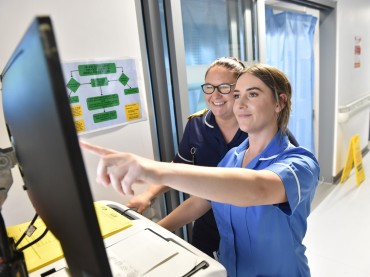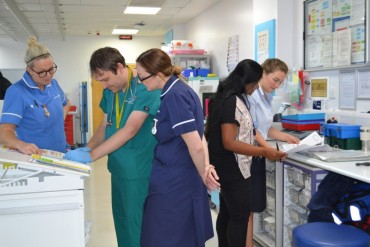Amblyopia, or a lazy eye as it is sometimes known, is defective vision (visual acuity) in one or both eyes which remains after the correct glasses are worn and after removal of any other obstacle to vision. It is thought to arise following changes to the visual pathways within the brain.
When does amblyopia develop?
Amblyopia can develop if there is any abnormality in the visual system within the critical period of development, such as:
- A squint (strabismus)
- A blurred image, for example if glasses need to be prescribed, or
- If the vision is occluded, for example by the eyelid drooping down or by some pathology within the eye
It may also be due to a combination of these, for example the need for glasses at the same time as having a squint.
What could the treatment be?
A full investigation with the orthoptist, optometrist and ophthalmologist will be carried out initially. If glasses are needed you will be given a prescription to take to an optician. Sometimes the vision of the weaker eye improves with glasses wear alone.
If the vision doesn’t improve after adequate glasses wear, patching of the better eye will be advised. Your orthoptist will discuss this with you and advise how long it should be worn.
An alternative to patching is an eye drop to blur the better eye (Atropine). This has found to be as effective as patching in improving vision. If you would like to try this treatment it is important that your child is under close supervision by their orthoptist and tested every two to three weeks at the hospital.
These treatments are given to improve your child’s vision, not to improve the squint. Good compliance with the treatment is essential for the best visual outcome.
When should treatment be carried out?
Treatment is most effective in children under eight years old. Recent research has found some improvement while patching older children up to 13 years old, and limited improvements up to 17 years old. Not all older children (8-17 years) are suitable for patching treatment. Your Orthoptist will advise and discuss this if needed.
When is the best time to wear the patch?
Activities such as drawing, colouring, electronic games or playing with small toys are best to encourage the eye to work harder and develop. If your child’s vision is very poor then playing with larger, brightly coloured toys are best so that they can see them more easily. Some children wear their patch at school or nursery.
Take care to carry out the treatment as instructed by the orthoptist as it will be specific to your child’s age and visual needs.
If you have any further questions please ask your orthoptist or other eye care professionals involved in your child’s care and they will be happy to help.



